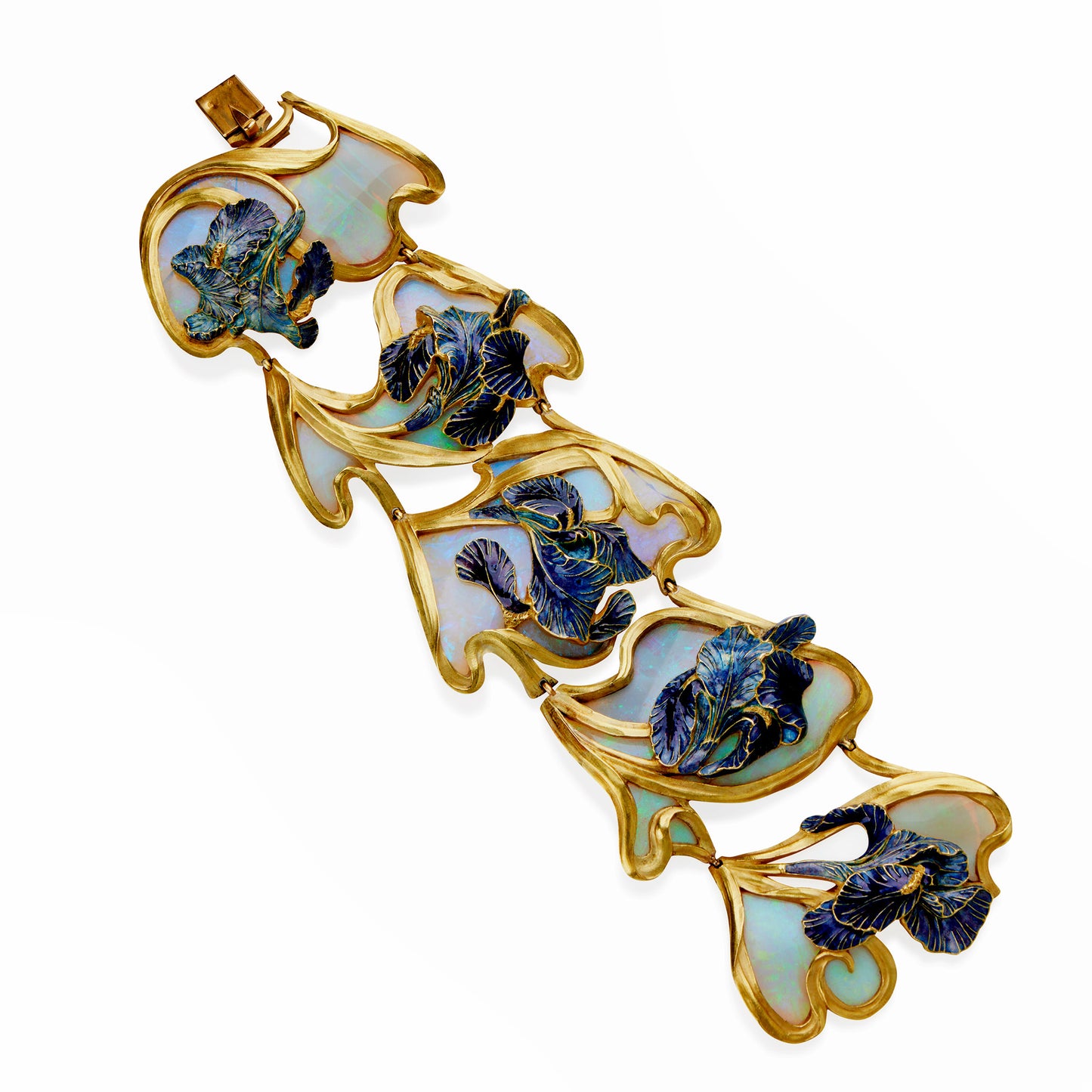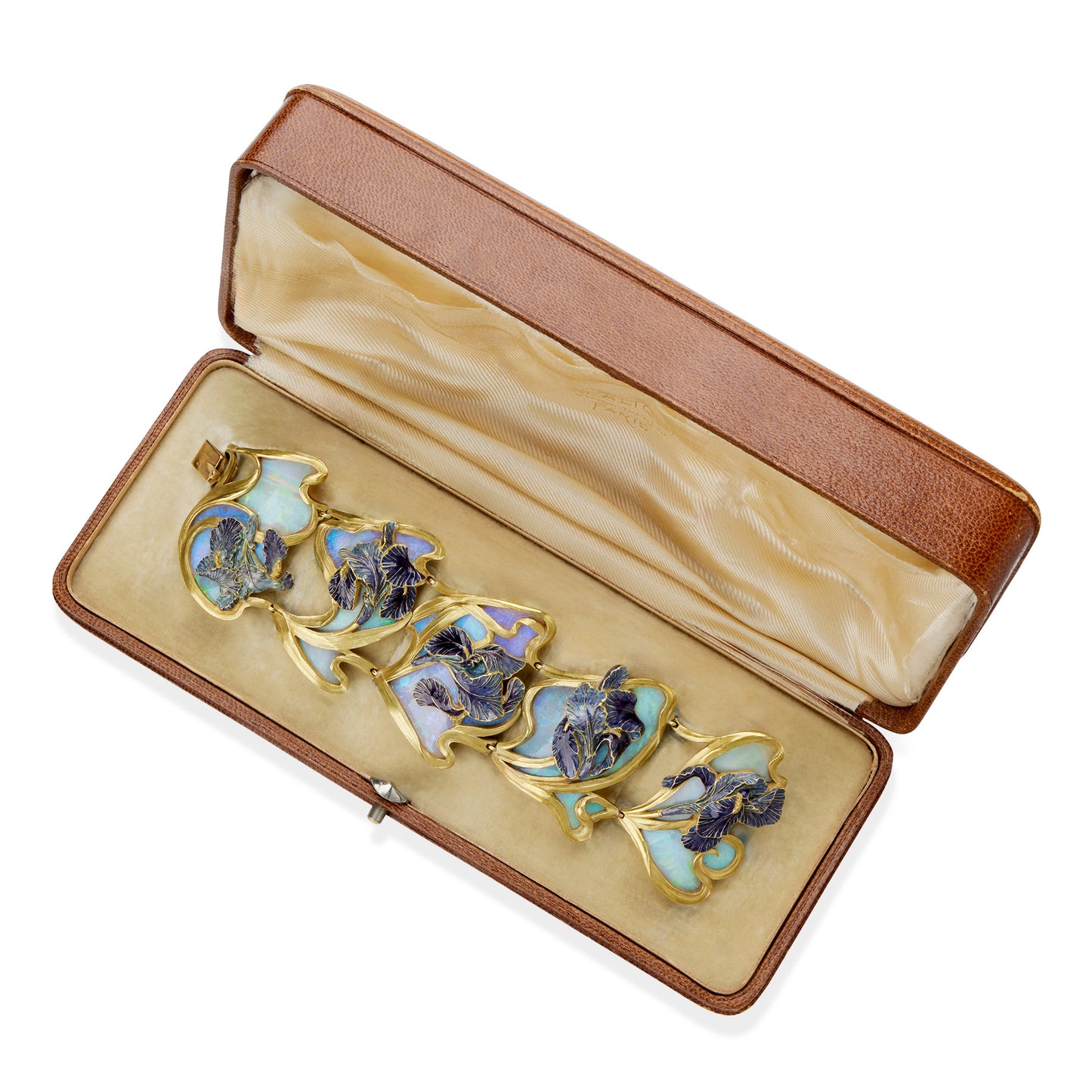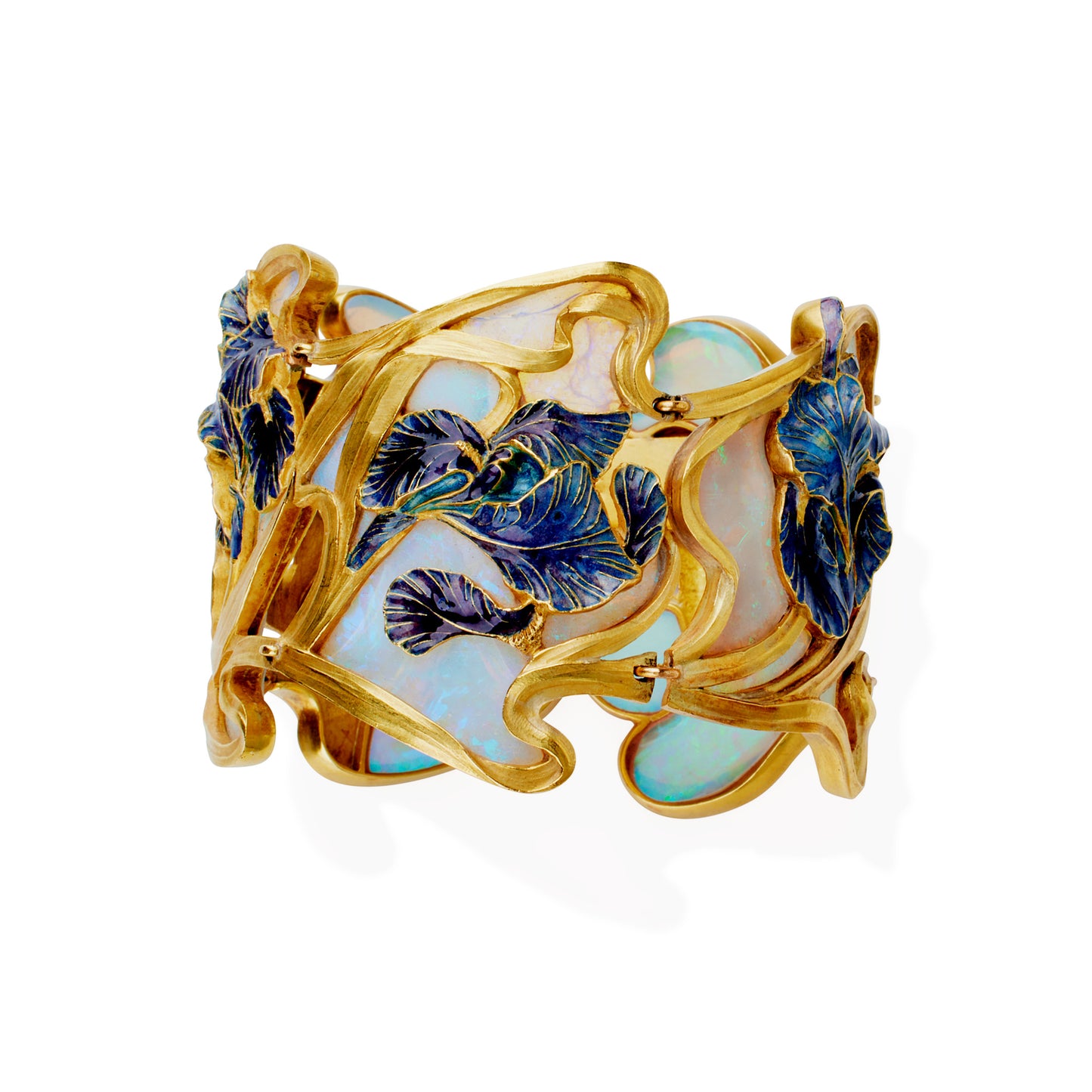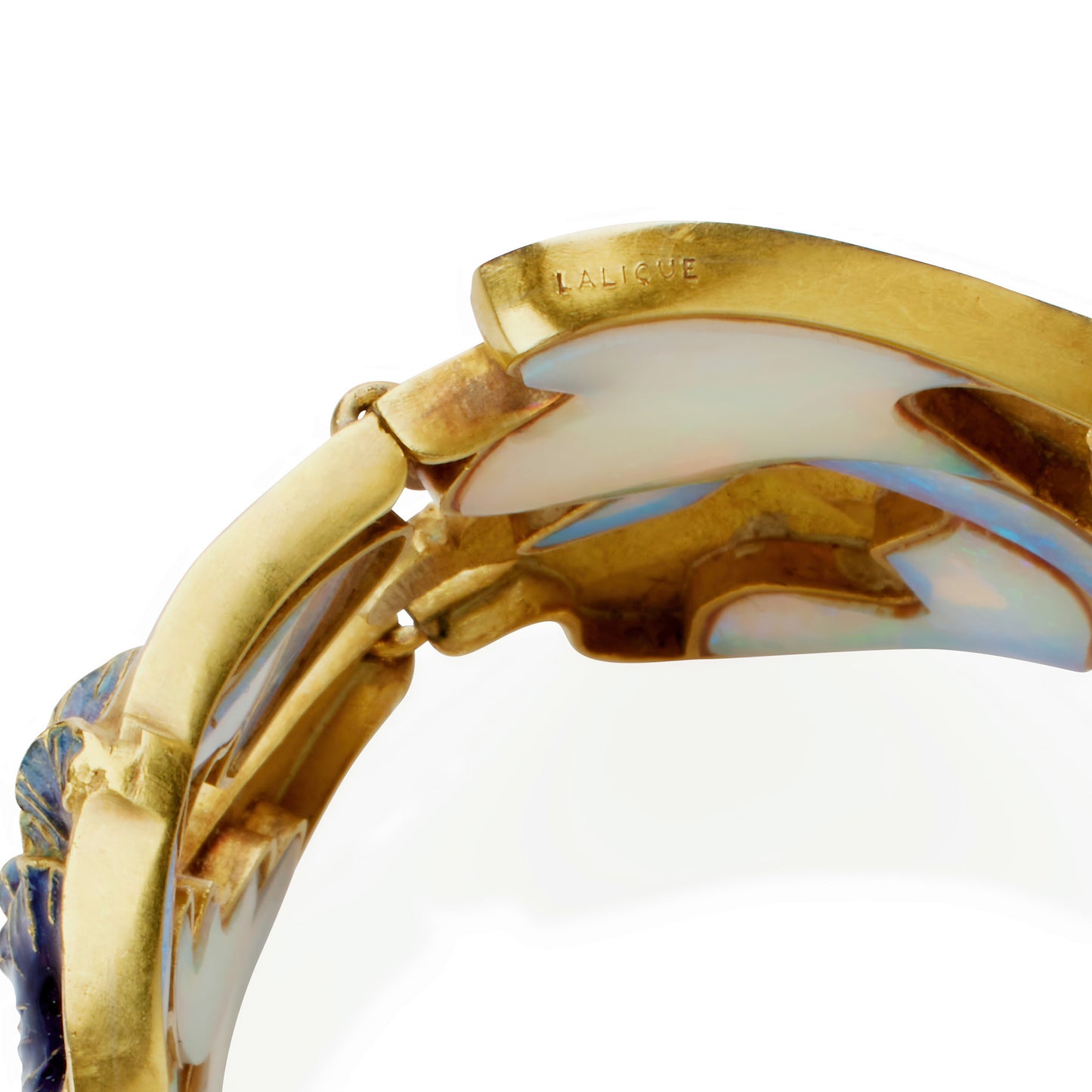René Lalique "Iris" Bracelet
Item #: BA-21459
Artist: René Lalique
Country: France
Circa: 1897
Dimensions: 6.75" length, 2" width.
Materials: 23 shaped precious opals; Basse taille enamel; 18K Gold; With original signed and fitted brown Morocco box with address for 20 Rue Thérèse
Signed: LALIQUE; maker's mark; French assay marks
Exhibition History: Masterpieces of 20th Century French Jewelry, The Forbes Galleries, New York, September 20-December 31, 2006, California Palace of the Legion of Honor, San Francisco, February 10-June 10, 2007, Catalonia. p. 36.
Art Nouveau 1890-1914, V&A, London, April 6-July 30, 2000, National Gallery of Art, Washington D.C., October 2000-January 28, 2001, Catalogue p. 28, Item 15.3
The Jewels of Lalique, Cooper-Hewitt, National Design Museum, Smithsonian Institution, New York, February 3-April 12, 1998, International Gallery, Smithsonian Institution, Washington, D.C. May15-August 16, 1998, and Dallas Museum of Art, Dallas, September 13, 1998-January 10, 1999, Catalogue p. 17, Item 53.
René Lalique, Musée des Arts Décoratifs, Paris, October 22, 1991- March 8, 1992, Item 225.
The Belle Époque of French Jewelry 1850-1910, Bayerische’s Nationalmuseum, Munich, December 1, 1989-March 4, 1990, Catalogue p. 219.
Literature: According to Vever, the bracelet was exhibited in the Salon of 1897 where Lalique was awarded a first class medal. Also:
Art et Décoration, 6, 1899, p. 16.
Revue des Arts Décoratifs 20, 1900, p. 243.
Henri Vever, French Jewelry of the Nineteenth Century, 1906-1908, vol. 3, p. 707.
René Lalique: Schmuck und Objets d’Art, 1890-1910, by Sigrid Barten, 1977, p. 447, cat. no. 1239 and 1239A.
The Belle Époque of French Jewelry 1850-1910, Michael Koch, Evelyn Possémé, et al., 1989, pp. 218-219.
The Jewels of Lalique, Yvonne Brunhammer, ed., 1998, p. 16.
Item #: BA-21459
Artist: René Lalique
Country: France
Circa: 1897
Dimensions: 6.75" length, 2" width.
Materials: 23 shaped precious opals; Basse taille enamel; 18K Gold; With original signed and fitted brown Morocco box with address for 20 Rue Thérèse
Signed: LALIQUE; maker's mark; French assay marks
Exhibition History: Masterpieces of 20th Century French Jewelry, The Forbes Galleries, New York, September 20-December 31, 2006, California Palace of the Legion of Honor, San Francisco, February 10-June 10, 2007, Catalonia. p. 36.
Art Nouveau 1890-1914, V&A, London, April 6-July 30, 2000, National Gallery of Art, Washington D.C., October 2000-January 28, 2001, Catalogue p. 28, Item 15.3
The Jewels of Lalique, Cooper-Hewitt, National Design Museum, Smithsonian Institution, New York, February 3-April 12, 1998, International Gallery, Smithsonian Institution, Washington, D.C. May15-August 16, 1998, and Dallas Museum of Art, Dallas, September 13, 1998-January 10, 1999, Catalogue p. 17, Item 53.
René Lalique, Musée des Arts Décoratifs, Paris, October 22, 1991- March 8, 1992, Item 225.
The Belle Époque of French Jewelry 1850-1910, Bayerische’s Nationalmuseum, Munich, December 1, 1989-March 4, 1990, Catalogue p. 219.
Literature: According to Vever, the bracelet was exhibited in the Salon of 1897 where Lalique was awarded a first class medal. Also:
Art et Décoration, 6, 1899, p. 16.
Revue des Arts Décoratifs 20, 1900, p. 243.
Henri Vever, French Jewelry of the Nineteenth Century, 1906-1908, vol. 3, p. 707.
René Lalique: Schmuck und Objets d’Art, 1890-1910, by Sigrid Barten, 1977, p. 447, cat. no. 1239 and 1239A.
The Belle Époque of French Jewelry 1850-1910, Michael Koch, Evelyn Possémé, et al., 1989, pp. 218-219.
The Jewels of Lalique, Yvonne Brunhammer, ed., 1998, p. 16.






















